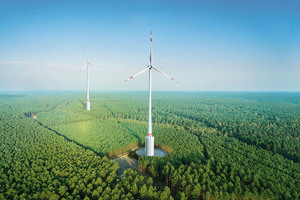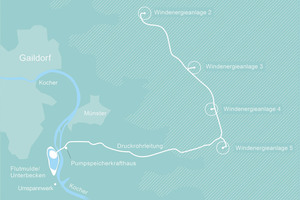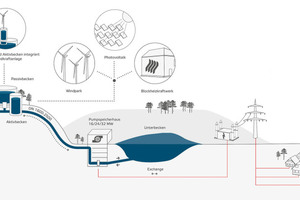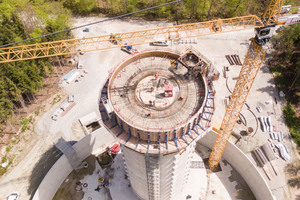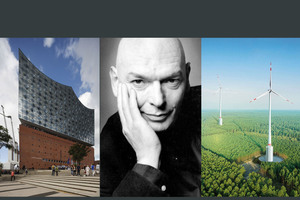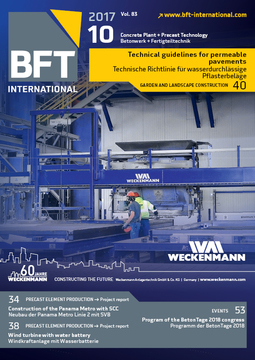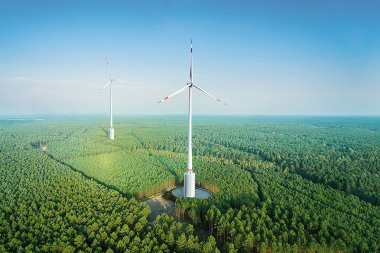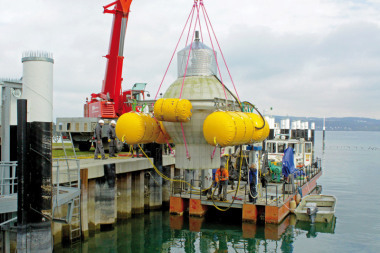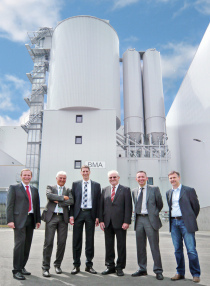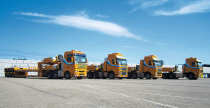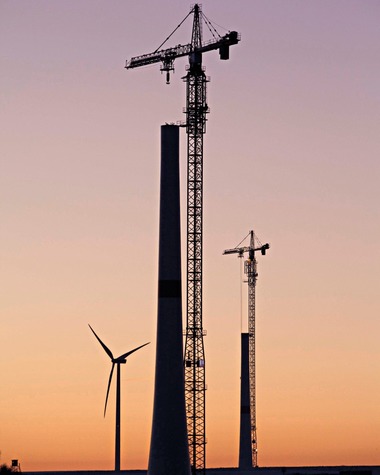Hybrid energy generation
A pilot project currently being implemented by Max Bögl Wind AG in the German town of Gaildorf, near Schwäbisch Hall, combines a wind farm comprising four turbines with a pumped-storage plant. This new power generation design utilizes the wind tower foundations as water reservoirs.
An ancient Chinese proverb says: “When the winds of change blow, some people build walls but others build windmills.” Max Bögl, too, opted for the second alternative in 2010 to draw from its many years of civil engineering experience in order to advance the use of renewable sources of energy. The company began to develop hybrid towers for wind turbines, and Max Bögl Wind AG has become one of the innovative pioneers of the industry.
In the German town of Gaildorf, a pilot project is currently being implemented that combines a wind farm comprising four turbines with a pumped-storage plant. This new power generation design conceived by Max Bögl Wind AG utilizes the tower foundations of the wind turbines as water reservoirs. Polyethylene (PE) pressure pipes connect the foundations to a hydropower plant and the associated lower reservoir 200 m down in the valley. Water storage in the tower foundations makes it possible to create an additional 40 m of hub height and to increase wind yield as a result. Taken together, the Gaildorf reservoirs provide the capacity for storing 160,000 m³ of water (equivalent to 70 MWh of electrical power). Similar to the hybrid tower design, the reservoirs were designed and built from precast elements in a modular approach.
Tower foundations used as water reservoirs
Max Bögl Wind AG came up with this so-called water battery to combine two renewable energy sources. The idea behind the Gaildorf project was to install large concrete foundations on the hills and to design them as water reservoirs at the same time, which reduces the need for conventional pumped-storage facilities that would require major interventions in the otherwise undisturbed landscape as well as a comprehensive process to obtain the necessary permits and approvals. This new design creates a ground-breaking “symbiosis” between renewable energy sources and pumped-storage facilities.
The “water battery” is a completely new, large storage facility comprising many innovations that define a new standard: For the first time, electricity generation from renewable sources such as wind or solar farms or biomass plants is linked to a state-of-the-art pumped-storage plant. The water battery is capable of storing excess electricity from the grid and to feed it back if and when required. It serves as a short-term storage facility and contributes to keeping the grid stable, thus ensuring secure and seamless electricity supply. The pumped-storage plant is available in three output categories (i.e. 16, 24 or 32 MW) and can switch between generation and storage mode within just 30 s.
Solution for volatile sources of energy
When the wind turbines are unable to generate electricity because of insufficient wind power, but electricity is needed in the grid nonetheless, water flows from the reservoirs into the lower basin and drives a turbine that produces electricity via a generator unit. Conversely, when the wind turbines supply more electricity than they can feed into the grid during windy periods ....
You can read the complete text in the Beton Bauteile 2018 yearbook (see right side).

